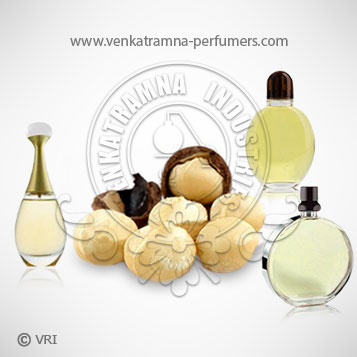
| Botanical Name | Macadamia ternifolia |
| Common Name | Macadamia tetraphylla |
| Country of Origin | Australia |
| Solubility | Pale yellow to golden yellow liquid |
| Specific Gravity | 1.044 –1.054@ 20°C |
| Optical Rotation | (-)1.5 –(-)4 @ 15°C |
| Refrective Index | 1.463 – 1.465 @°C |
| PlantPart | Seed |
| Bland With | WheatGerm Carrier Oil,Jojoba Carrier Oil,Avocado Carrier Oil. |
| CAS No | 128497-20-1 |
| Flash Point | 100 °C |
| Extraction Method | Solvent extracted |
Macadamia oil is probably more widely known as a delicious cooking oil than as a massage oil. Alas, the macadamia oil used for aromatherapy is not edible, but it nonetheless provides a richly sensuous experience. Combined with another, more aromatic oil, such as lemon myrtle, macadamia oil is at once calming and revitalizing. In fact, it is better used as a base oil, than all by itself.
Macadamia nuts have long been one of the most important food sources of Australia's aborigines. The nuts have a very high caloric value thus providing ample nutrition. However, they are also very hard to crack. There is no information available on the role of Macademia nut in aborigine mythology. Nuts generally are regarded as tokens of health, fertility and prosperity.
Color : Pale yellow to golden yellow liquid,
Aroma : Macadamia has very little scent characteristic of most carrier oils.
Lauric, myristic, palmitic, palmitoleic, margaric, margaroleic, stearic, oleic, linoleic, a-linolenic, arachidic, eicosanic, behenic, erucic and lignoceric acids
Macadamia Carrier Oil is popular in cosmetic manufacturing and in combination with other carrier oils, can be used in both massage and aromatherapy